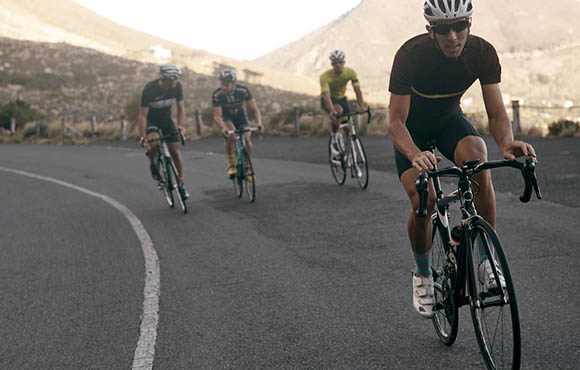All too often, though, the buzz of it all can cloud our judgment, making the transition rougher than it needs to be—and in some cases even leading to injury. Here are a few easy mistakes you should avoid on your way to peak fitness.
Going Too Hard Too Soon
1 of 7
Amping up your training volume significantly overnight can lead to tendonitis and burnout, and can rob you of the metabolic advantages gained from easier base miles.
Instead, crank the intensity slowly while building overall training volume by 10 to 15 percent per week. For example, if you've been riding eight hours weekly, increasing to 10 is completely feasible. You can also add in a few sets of 30-second on-off efforts. Try six 30-second efforts with five minutes rest between sets. Do a few sets two to three times per week to give yourself time to recover.
Find:
Your Next RideGetting Intimidated by Group Rides
2 of 7
I've often heard people say they want to improve their fitness before joining a group—but this is where you'll earn your stripes, get your pack riding skills up to speed, and gain the much needed variable intensity that will boost your fitness quickly. The camaraderie of the group is also a great competitive motivator: When reviewing training files, I've never seen someone work harder doing solo training efforts than they do with a group.
Find:
Your Next RideDoing the Same Old Intervals
3 of 7
The old-school prescriptive methodology of long blocks of tempo and threshold work have been played out. Spring is the time to spice things up with zone ladders, under-overs, and ramp sets.
For a ladder, start with five minutes at zone three, three minutes at zone four, one minute of zone five, then work your way back down. As fitness improves, increase time at each zone or perform multiple sets.
Under-overs can be done in many combinations depending on your goals. Try a 12-minute block with three rounds of three minutes at zone three and one minute at zone five. Take eight minutes rest between sets.
Ramps are just what they sound like: building from one zone to the next and topping out with a max effort. Experiment with the length of time at each zone, beginning with five minutes at zone three, four minutes at zone four, and two minutes at zone five.
Find:
Your Next RideSkipping Cross Training
4 of 7
Don't lose all that strength and core stability you built in the winter months. Instead you'll want to take at least two days per week to maintain these training adaptations; as the old adage suggests, if you don't use it you lose it.
To save your energy for riding, you can reduce volume while keeping the load high. Three sets of two to four heavy reps will maintain strength and not induce the fatigue associated with heavy lifting.
Find:
Your Next RideLoading Up on Calories
5 of 7
While the easiest strategy is to watch your calories year-round, the holidays and winter months make it easier to indulge in the treats that sabotage our power to weight ratio. Tighten up your nutrition by eating lean meat once per day, upping your veggie intake, and saving simple carbs for just before or during training. Another great strategy is to weigh yourself once weekly, straight out of bed, to make sure that number is moving in the direction you want it to.
Find:
Your Next RideForgetting to Stretch
6 of 7
Building volume and intensity is guaranteed to increase fatigue, and may bestow some new aches and pains—so it's important to remember to stretch. A 20-30 minute yoga session done two to three times weekly will work wonders for your recovery and comfort on the bike. Try the $3.99 Yoga Studio app, which offers a wide range of ability levels and focus areas. Another trick is to keep your foam roller in a visible place so you remember to roll out tight hamstrings, glutes, quads, IT bands, and lower back after your ride.
Keep these common pitfalls in mind, and you'll start your summer season fitter and faster than ever!







Discuss This Article